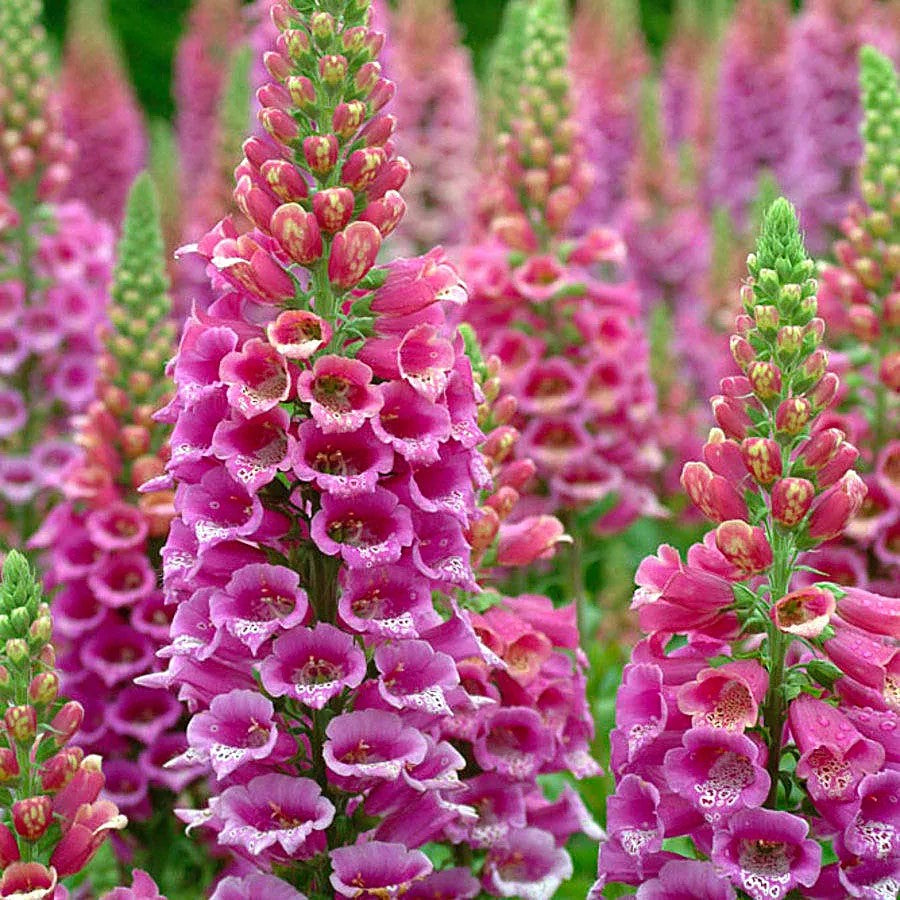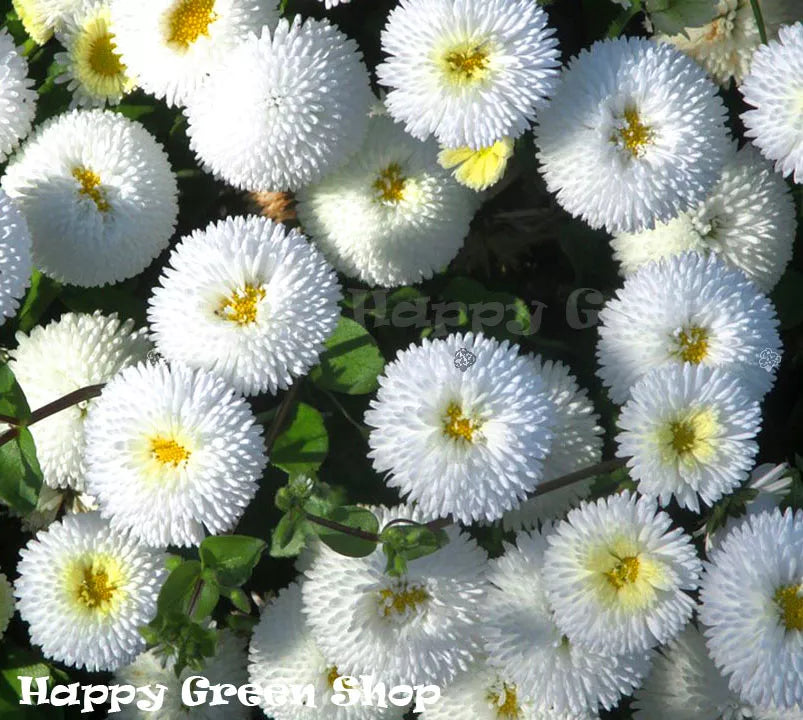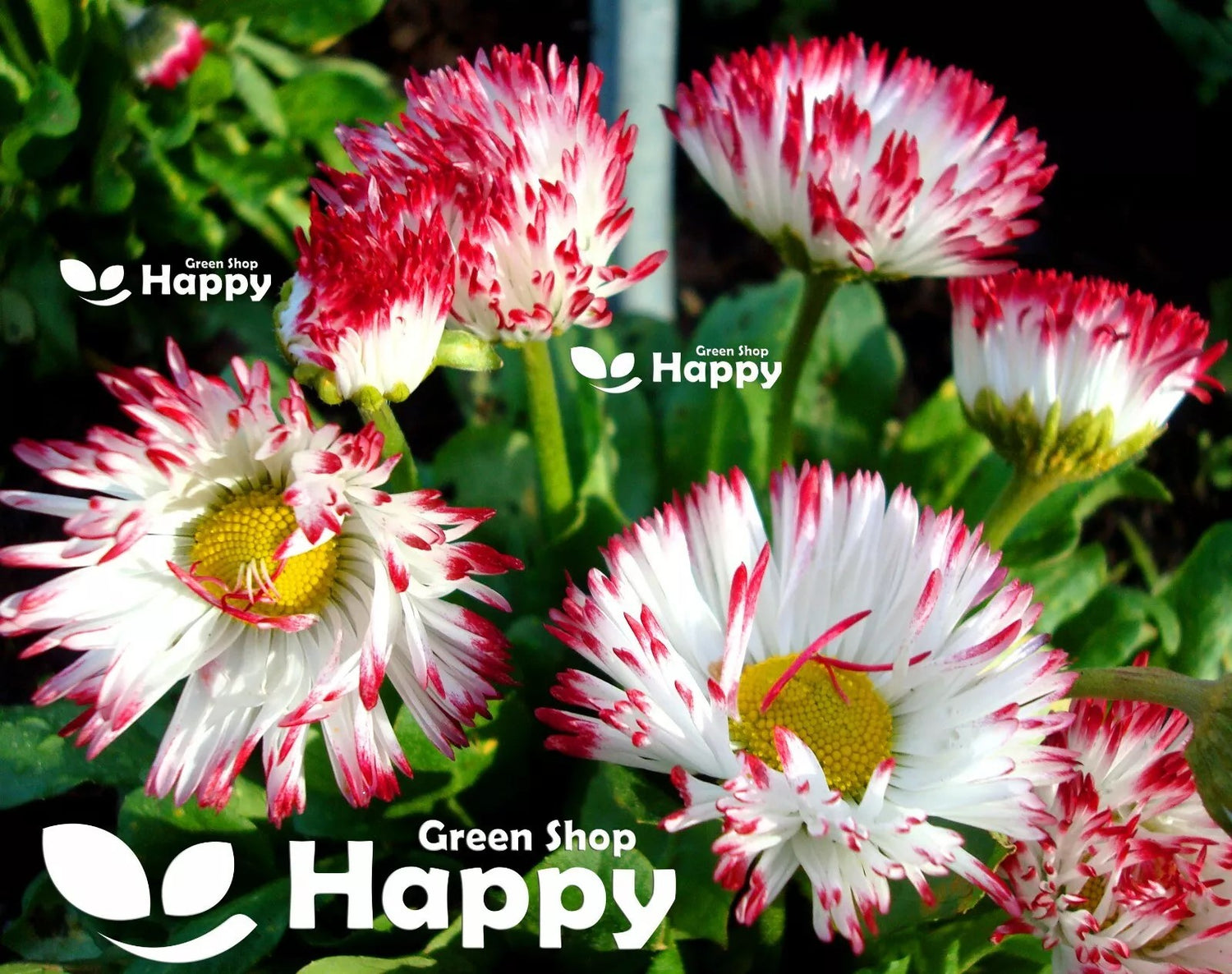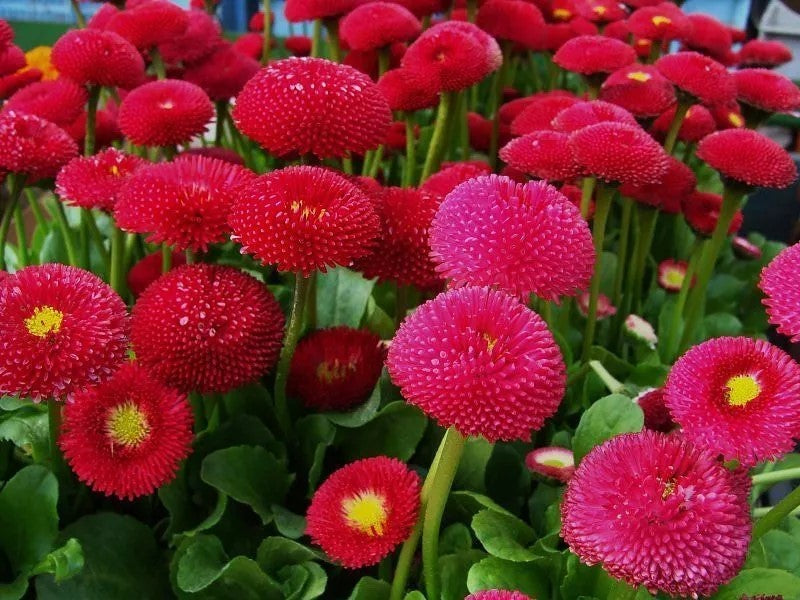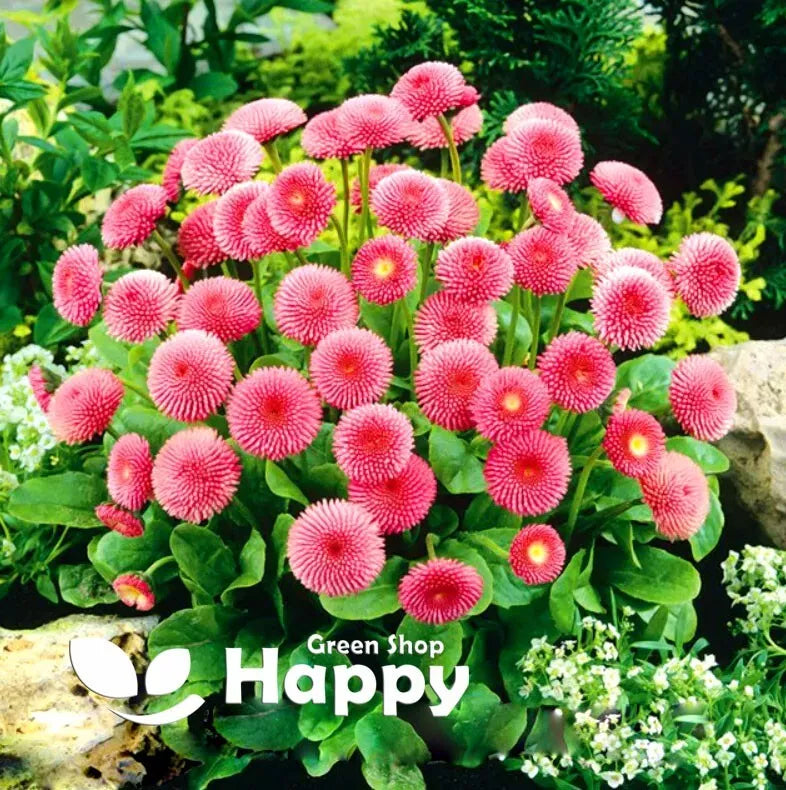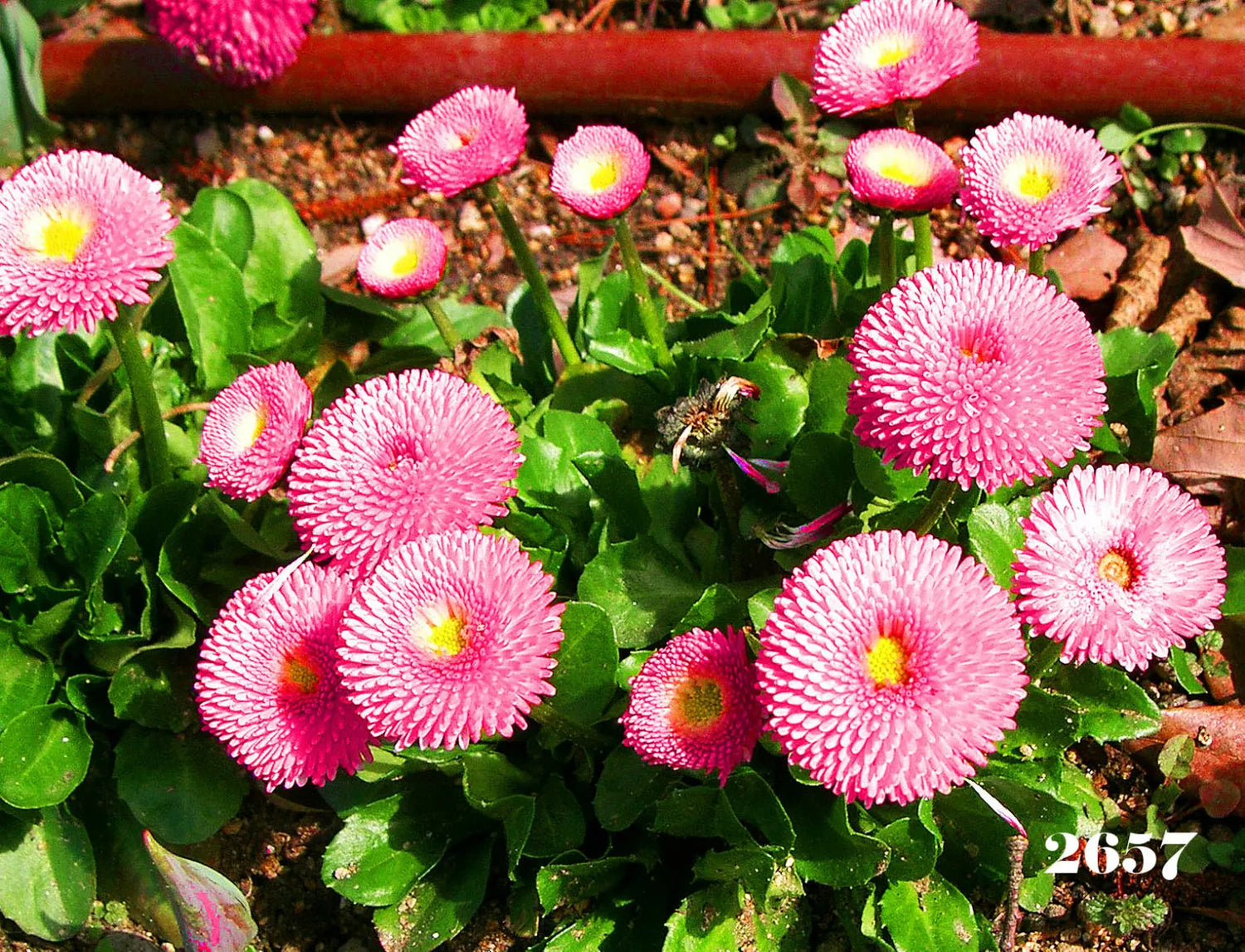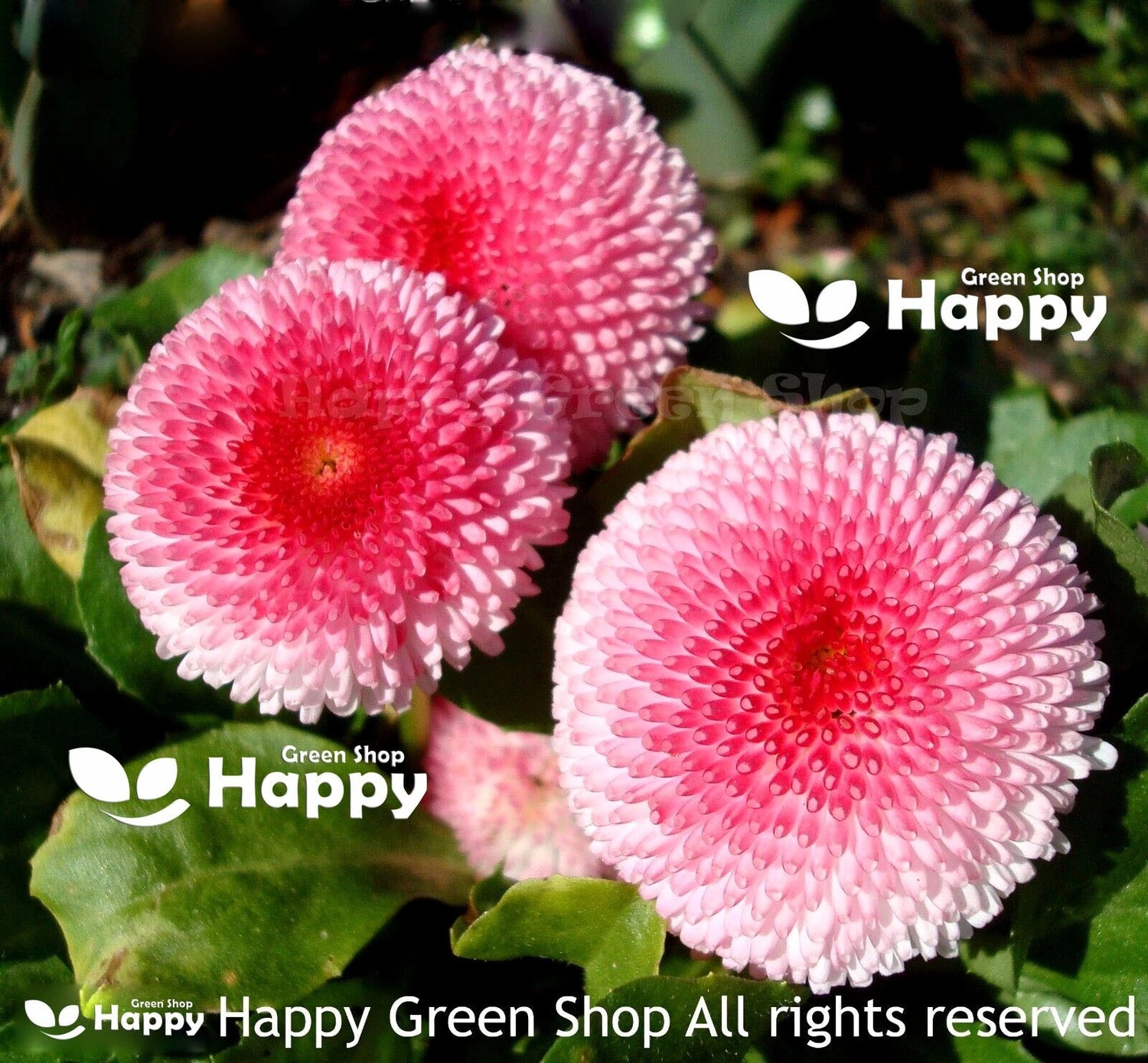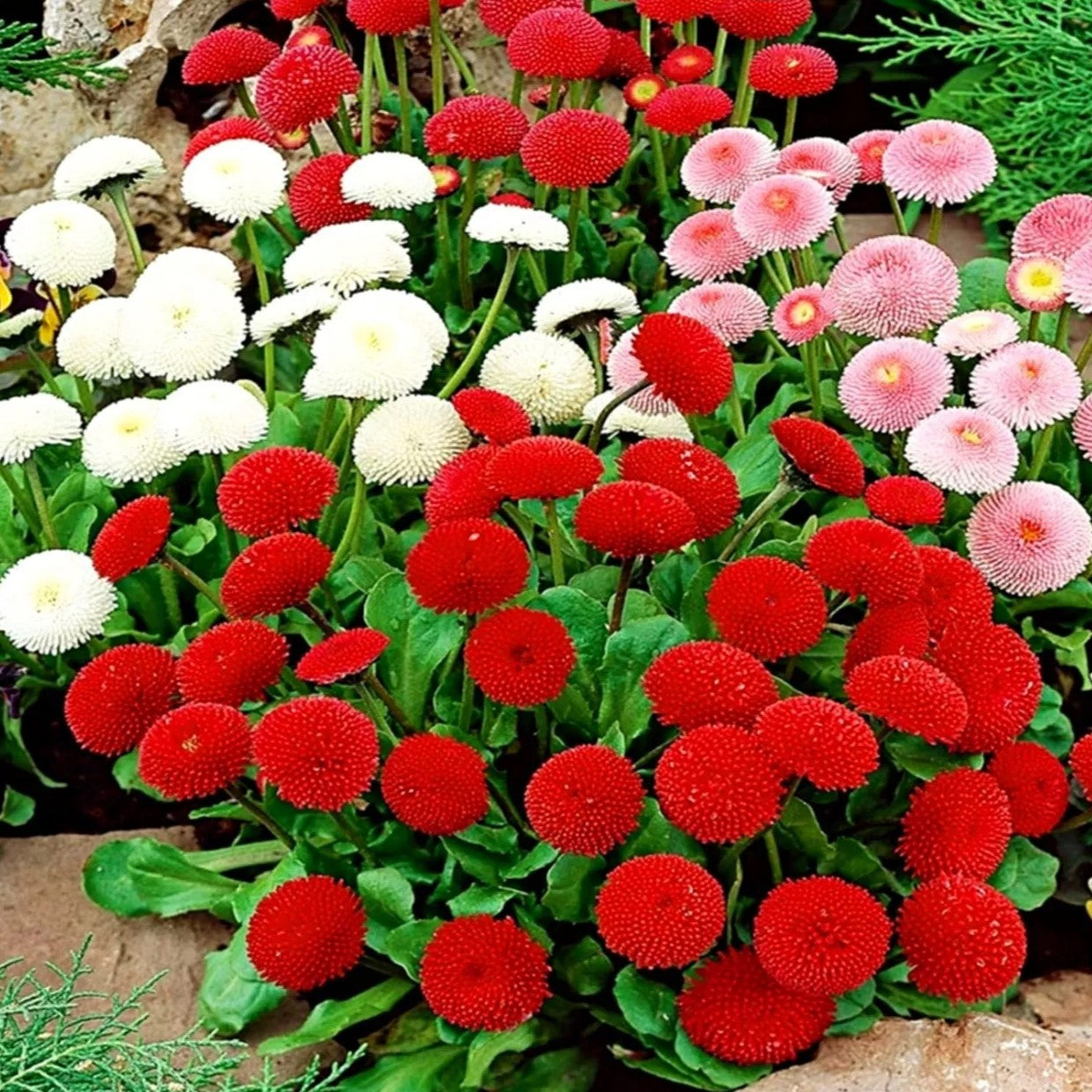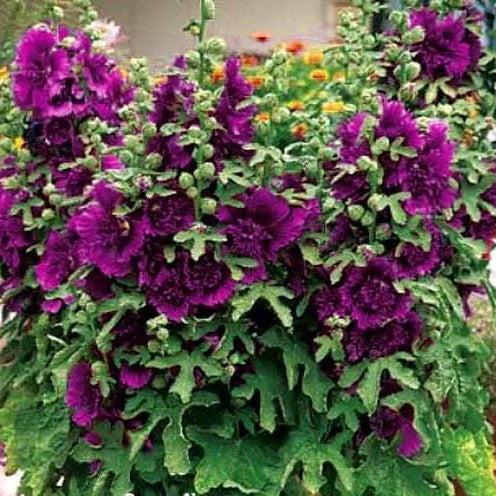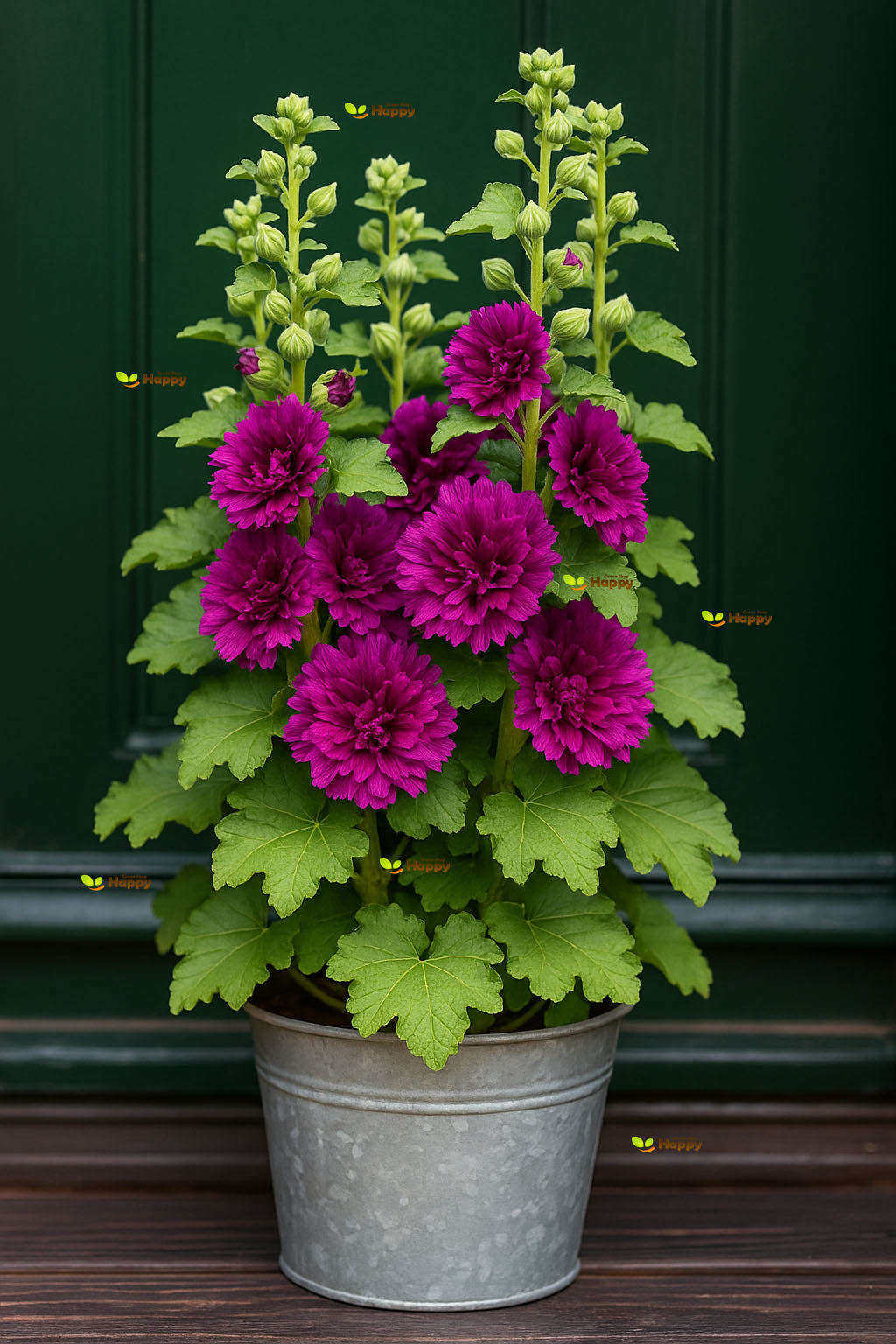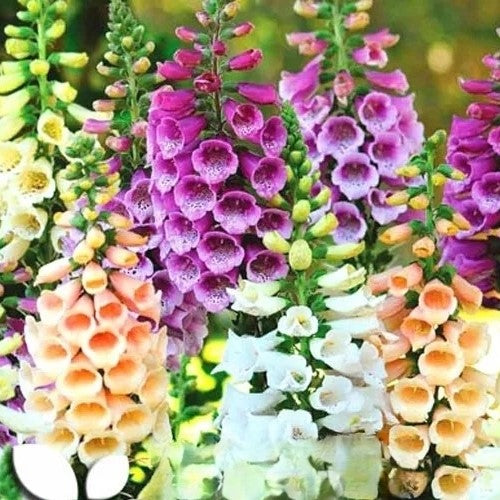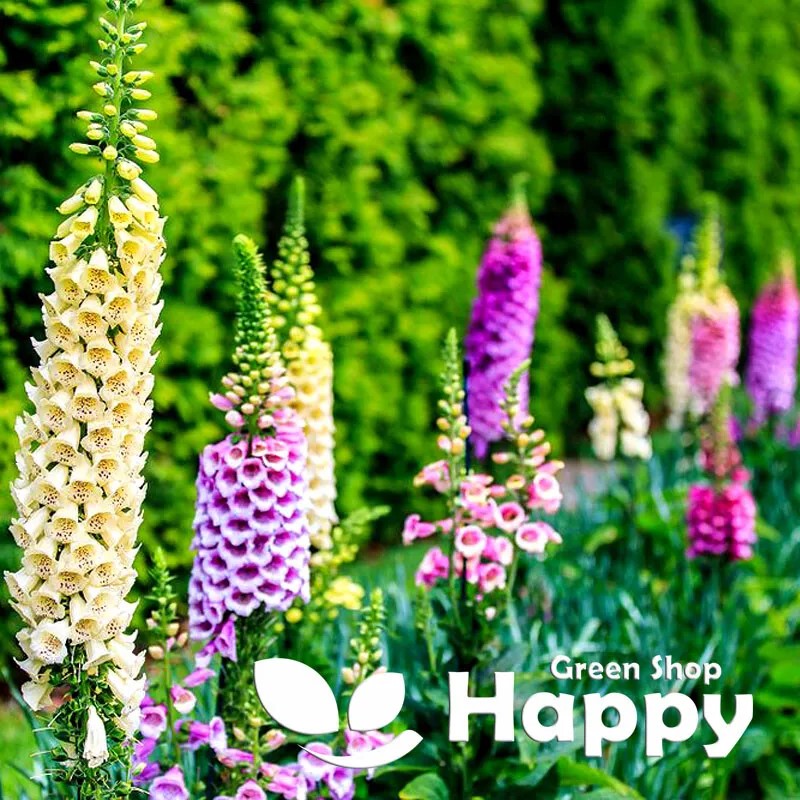Sort by:
56 products
56 products
Foxglove 'Excelsior' Mix Seeds (Digitalis purpurea – Biennial)
The Foxglove 'Excelsior' Mix is one of the most admired cottage garden classics, producing tall, elegant spires of tubular flowers in shades of rose, lavender, purple, cream, and white, often marked with speckled throats. Unlike traditional foxgloves, the Excelsior strain displays its flowers all around the stem, creating a fuller and more impressive floral column. As a biennial, it flowers in the second year after sowing and readily self-seeds for future displays.
What Makes It Special
-
Traditional cottage garden favorite with tall, majestic flower spikes
-
Excelsior strain bears blooms on all sides of the stem for maximum impact
-
Attracts bees, butterflies, and hummingbirds
-
Excellent cut flower and stunning for borders or woodland plantings
Key Features
-
Botanical name: Digitalis purpurea
-
Variety: 'Excelsior' Mix
-
Height/Spread: 120–150 cm tall, 40–60 cm spread
-
Position: Partial shade to sun; prefers rich, moist, well-drained soil
-
Flowering period: Late spring to mid-summer (second year)
-
Lifespan: Biennial, often self-seeds for naturalized displays
Ideal For
-
Cottage and woodland-style gardens
-
Back borders for height and structure
-
Naturalizing in shaded areas
-
Pollinator-friendly gardens
Sowing Instructions
-
When to sow: Late spring to summer (May–July) for flowering the following year.
-
How to sow:
-
Sow seeds on the surface of moist compost (do not cover – light aids germination).
-
Keep at 18–22°C until germination (14–30 days).
-
Transplant seedlings 45 cm apart in borders or beds.
-
-
Care: Water regularly, especially in dry spells. Remove spent flower spikes to extend blooming, or allow some to seed for natural regeneration.
English Daisy 'Pomponette' White Seeds (Bellis perennis)
The English Daisy ‘Pomponette’ White is a refined garden classic, producing neat, double pompon-like flowers in pure white. Compact and long-flowering, it brings freshness and elegance to borders, pots, and spring bedding schemes. Its timeless charm makes it perfect for traditional cottage gardens and for pairing with tulips, violas, or primroses.
What Makes It Special
-
Produces pure white, pompon-style blooms for a clean and elegant look
-
Compact, hardy, and easy to grow in most gardens
-
Provides a long flowering season from early spring onwards
-
Excellent choice for classic bedding schemes and container planting
Key Features
-
Botanical name: Bellis perennis
-
Variety: Pomponette White
-
Height/Spread: 15–20 cm tall, 15–20 cm spread
-
Position: Full sun or partial shade; thrives in moist, well-drained soil
-
Flowering period: Early spring to early summer
-
Lifespan: Perennial, often grown as a biennial
Ideal For
-
Cottage gardens and traditional flower beds
-
Spring bedding displays with tulips and primroses
-
Pots, containers, and window boxes
-
Low-growing borders and edging
-
Adding a soft, white contrast to mixed planting schemes
Sowing Instructions
-
When to sow: Late spring to mid-summer (May–July) for flowers the following spring.
-
How to sow:
-
Sow thinly on the surface of moist seed compost.
-
Do not cover, as seeds need light to germinate.
-
Keep moist at 15–20°C. Germination takes 14–28 days.
-
-
Transplant/Thin: When seedlings are large enough to handle, transplant to pots or trays. Plant outdoors 15–20 cm apart.
-
Care: Deadhead faded blooms to prolong flowering. Protect young plants from severe frost.
English Daisy Mix Seeds (Bellis Perennis Monstrosa)
A classic cottage garden favorite, English Daisy Mix produces charming button-like blooms in shades of white, pink, and red. Compact and easy to grow, these low-maintenance flowers are perfect for borders, containers, and pollinator-friendly gardens.
What Makes It Special
-
Bright, cheerful spring color in a mix of shades
-
Compact growth, ideal for edging and small spaces
-
Long-lasting blooms loved by bees and butterflies
Key Features
-
Botanical name: Bellis Perennis Monstrosa
-
Hardy perennial (often grown as biennial)
-
Height: 10–15 cm (4–6 in)
-
Bloom time: Early spring to summer
Ideal For
-
Borders, edging, and pathways
-
Containers and pots
-
Cottage and wildlife gardens
Sowing
-
Sow indoors Feb–Apr or outdoors May–Jul
-
Surface sow onto moist soil, press lightly (needs light to germinate)
-
Germination: 14–21 days at 15–20°C
-
Transplant when large enough, spacing 15 cm apart
-
Flowers the following spring and summer
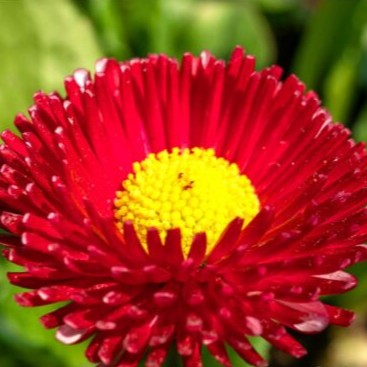
English daisy 'Super enorma' red - 500 seeds (Bellis perennis) Large flowers
£1.15
Unit price perEnglish daisy 'Super enorma' red - 500 seeds (Bellis perennis) Large flowers
£1.15
Unit price perEnglish Daisy 'Super Enorma' Red Seeds (Bellis perennis)
The English Daisy ‘Super Enorma’ Red is a premium variety renowned for its extra-large double blooms in a rich, velvety red shade. Compared to traditional English daisies, ‘Super Enorma’ produces bigger, showier flowers that stand out beautifully in spring borders, containers, and cottage gardens. This hardy perennial, often grown as a biennial, brings an early burst of dramatic color and pairs perfectly with spring bulbs and other bedding plants.
What Makes It Special
-
Extra-large blooms for maximum impact
-
Vivid deep red pompon flowers that brighten spring gardens
-
Compact growth yet highly floriferous
-
Hardy and reliable, ideal for early-season displays
Key Features
-
Botanical name: Bellis perennis
-
Variety: Super Enorma Red
-
Flower size: Larger than standard Bellis varieties
-
Height/Spread: 15–20 cm tall, 15–20 cm spread
-
Position: Full sun or partial shade; moist, fertile, well-drained soil
-
Flowering period: Early spring to early summer
-
Lifespan: Perennial, usually cultivated as a biennial
Ideal For
-
Spring bedding and borders
-
Containers and pots for dramatic color
-
Cottage gardens and mixed plantings
-
Pairing with tulips, hyacinths, and pansies for classic displays
-
Gardeners seeking large, showy daisies in bold red
Sowing Instructions
-
When to sow: May to July for flowers the following spring.
-
How to sow:
-
Sow on the surface of moist seed compost, as seeds need light to germinate.
-
Keep at 15–20°C; germination takes 14–28 days.
-
-
Transplant/Thin: Prick out seedlings when large enough to handle and grow on in cooler conditions. Harden off before planting 15–20 cm apart.
-
Care: Regular deadheading encourages longer flowering. Protect young plants from harsh frost.
English Daisy 'Pomponette' Red Seeds (Bellis perennis)
The English Daisy ‘Pomponette’ Red is a compact and eye-catching spring flower that produces dense, pompon-shaped double blooms in deep crimson to bright scarlet shades. Perfect for borders, edging, containers, or spring bedding, these hardy daisies bring vibrant early-season color and combine beautifully with tulips, violas, and forget-me-nots.
What Makes It Special
-
Striking pompon-style flowers in vivid red tones
-
Compact and hardy perennial, often grown as a biennial
-
Early-flowering, adding bold color in spring
-
Easy to grow and reliable in many garden settings
Key Features
-
Botanical name: Bellis perennis
-
Variety: Pomponette Red
-
Height/Spread: 15–20 cm tall, 15–20 cm spread
-
Position: Full sun or partial shade; moist, fertile, well-drained soil
-
Flowering period: Early spring to early summer
-
Lifespan: Perennial, usually treated as a biennial
Ideal For
-
Spring borders and edging
-
Containers, pots, and window boxes
-
Cottage gardens and traditional bedding displays
-
Pairing with spring bulbs like tulips, daffodils, and hyacinths
-
Adding a bold red highlight among softer pastel flowers
Sowing Instructions
-
When to sow: May to July for flowers the following spring.
-
How to sow:
-
Sow on the surface of moist seed compost, as seeds need light to germinate.
-
Keep at 15–20°C; germination takes 14–28 days.
-
-
Transplant/Thin: Prick out seedlings when large enough, then grow on in cooler conditions. Harden off before planting 15–20 cm apart.
-
Care: Remove faded flowers to prolong blooming. Protect young plants from severe frost.
English Daisy 'Pomponette' Pink Seeds (Bellis perennis)
The English Daisy ‘Pomponette’ Pink is a charming variety that produces neat, double pompon-shaped blooms in rich shades of soft to deep pink. Compact and easy to grow, it adds a delightful splash of color to borders, containers, and spring bedding displays. A timeless favorite, perfect for pairing with tulips, violas, and primroses.
What Makes It Special
-
Distinctive pompon-style flowers in shades of pink
-
Compact, hardy, and low-maintenance
-
Early and long flowering from spring through early summer
-
Ideal for creating vibrant, colorful borders and edging
Key Features
-
Botanical name: Bellis perennis
-
Variety: Pomponette Pink
-
Height/Spread: 15–20 cm tall, 15–20 cm spread
-
Position: Full sun or partial shade; prefers moist, well-drained soil
-
Flowering period: Early spring to early summer
-
Lifespan: Perennial, often grown as a biennial
Ideal For
-
Cottage gardens and spring bedding schemes
-
Bright borders and edging
-
Containers, pots, and window boxes
-
Pairing with spring bulbs such as tulips and daffodils
-
Creating a soft pink contrast in mixed planting displays
Sowing Instructions
-
When to sow: Late spring to mid-summer (May–July) for flowers the following spring.
-
How to sow:
-
Sow thinly on the surface of moist seed compost.
-
Do not cover, as seeds need light to germinate.
-
Maintain moisture at 15–20°C. Germination takes 14–28 days.
-
-
Transplant/Thin: When seedlings are large enough, transplant into pots or trays. Harden off before planting outdoors 15–20 cm apart.
-
Care: Deadhead regularly to encourage more blooms. Protect young plants from harsh frost.
English Daisy 'Pomponette' Mixed Seeds (Bellis perennis)
The English Daisy ‘Pomponette’ is a charming cottage garden favorite, loved for its dense pompon-like blooms in shades of red, pink, and white. Compact and cheerful, these dainty flowers create vibrant color displays in borders, pots, and spring bedding schemes. Their long flowering period and old-fashioned charm make them a must-have for any traditional garden.
What Makes It Special
-
Produces unique pompon-style blooms in bright mixed colors
-
Hardy, compact, and reliable for early spring displays
-
A classic cottage garden flower with enduring charm
-
Excellent for edging, borders, and containers
Key Features
-
Botanical name: Bellis perennis
-
Variety: Pomponette Mixed
-
Height/Spread: 15–20 cm tall, 15–20 cm spread
-
Position: Full sun or partial shade; prefers moist, well-drained soil
-
Flowering period: Early spring to early summer
-
Lifespan: Perennial, often grown as a biennial
Ideal For
-
Cottage and traditional gardens
-
Spring bedding displays with tulips and primroses
-
Pots, containers, and window boxes
-
Low-growing borders and edging
-
Naturalizing in lawns or meadow-style gardens
Sowing Instructions
-
When to sow: Late spring to mid-summer (May–July) for flowering the following spring.
-
How to sow:
-
Sow thinly on the surface of moist seed compost and press lightly.
-
Do not cover, as seeds need light to germinate.
-
Keep moist at 15–20°C. Germination takes 14–28 days.
-
-
Transplant/Thin: Move seedlings to individual pots or trays when large enough. Plant outdoors 15–20 cm apart.
-
Care: Remove faded blooms to prolong flowering. Protect from harsh frost in the first year.
Dwarf Hollyhock ‘Queeny’ Purple – Seeds
(Althaea rosea) – Perennial, often grown as biennial
The Dwarf Hollyhock ‘Queeny’ Purple is a compact variety of the traditional cottage garden favorite. Unlike tall hollyhocks, this dwarf strain grows to a manageable height, making it suitable even for smaller gardens, pots, or the front of borders. It produces large, ruffled, purple blooms that flower generously from summer into autumn, creating a bold and dramatic display.
Key Features
-
Type: Hardy perennial (often grown as biennial)
-
Height: 60–80 cm
-
Spread: 40 cm
-
Flowers: Large, rich purple, semi-double to double blooms
-
Blooming period: June–September
-
Position: Full sun
-
Soil: Well-drained, fertile soil
Ideal For
-
Cottage gardens
-
Mixed borders
-
Container planting
-
Pollinator-friendly gardens (attracts bees & butterflies)
Sowing & Growing
-
Sow indoors: February–April in trays with seed compost, lightly cover with soil
-
Germination: 14–21 days at 18–22°C
-
Transplant: When large enough, harden off and plant outdoors after frost
-
Direct sowing: April–May in flowering position
-
Care: Water well in dry weather and remove faded flowers to encourage longer blooming
Dwarf Foxglove 'Foxy' Mix – 8000 Seeds (Digitalis purpurea)
Add cottage garden charm with Dwarf Foxglove 'Foxy', a compact variety that produces spires of trumpet-shaped blooms in shades of pink, purple, cream, and white. Unlike taller foxgloves, 'Foxy' grows to a manageable height, making it perfect for smaller gardens, beds, borders, and containers. Loved by bees and pollinators, it’s a classic for wildlife-friendly planting.
What Makes It Special
-
Compact foxglove, only 60–80 cm tall
-
Mix of soft, romantic colors with speckled throats
-
Blooms in the first year from seed
-
Perfect for beds, borders, and wildlife gardens
Key Features
-
Pack Size: 8000 seeds
-
Height: 60–80 cm
-
Biennial (flowers in year one if sown early)
-
Attracts bees and other pollinators
Ideal For
-
Cottage and wildlife gardens
-
Beds, borders, and mixed plantings
-
Containers and small gardens
-
Pollinator-friendly spaces
Sowing
-
Sow indoors Jan–May on moist seed compost, press seeds lightly (do not cover, needs light to germinate)
-
Germination: 14–21 days at 18–22°C
-
Transplant outdoors after frost, spacing 25–30 cm
-
Flowers: June–August
Showing 45/56




